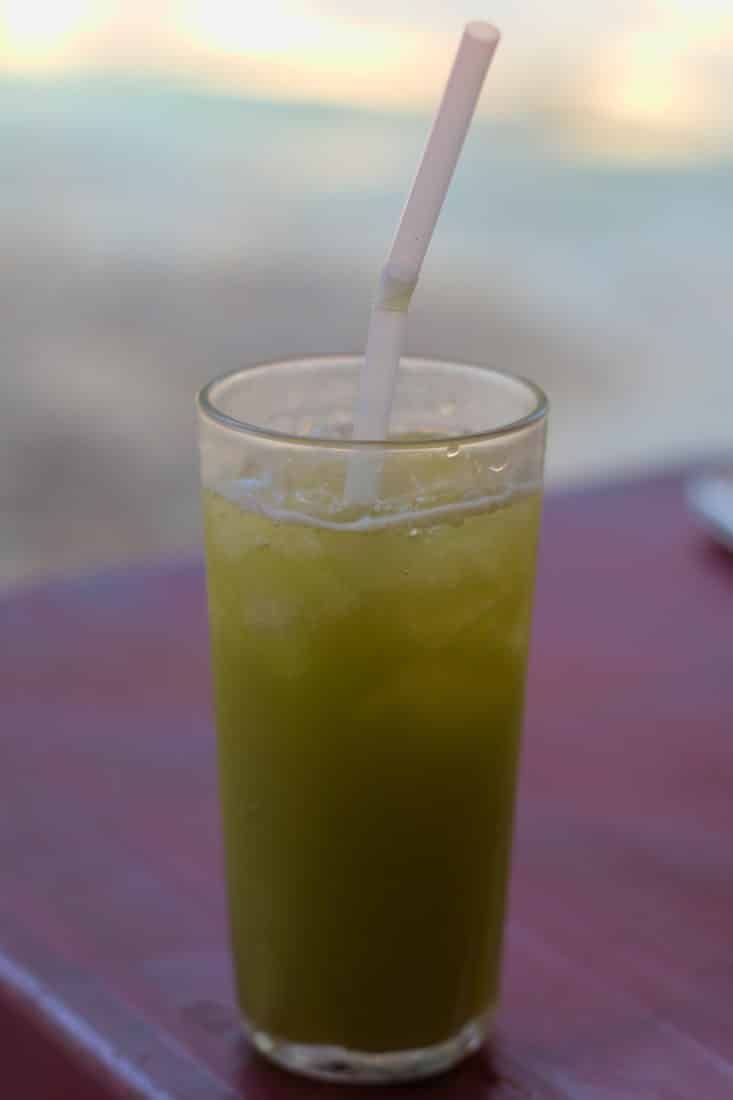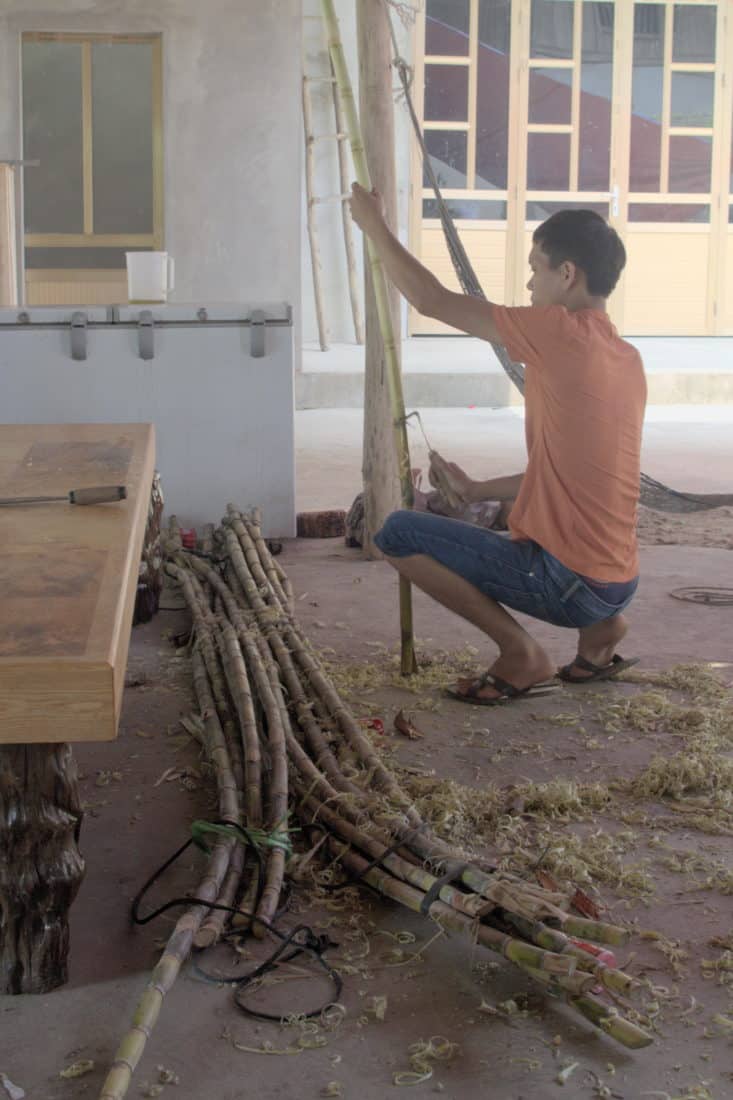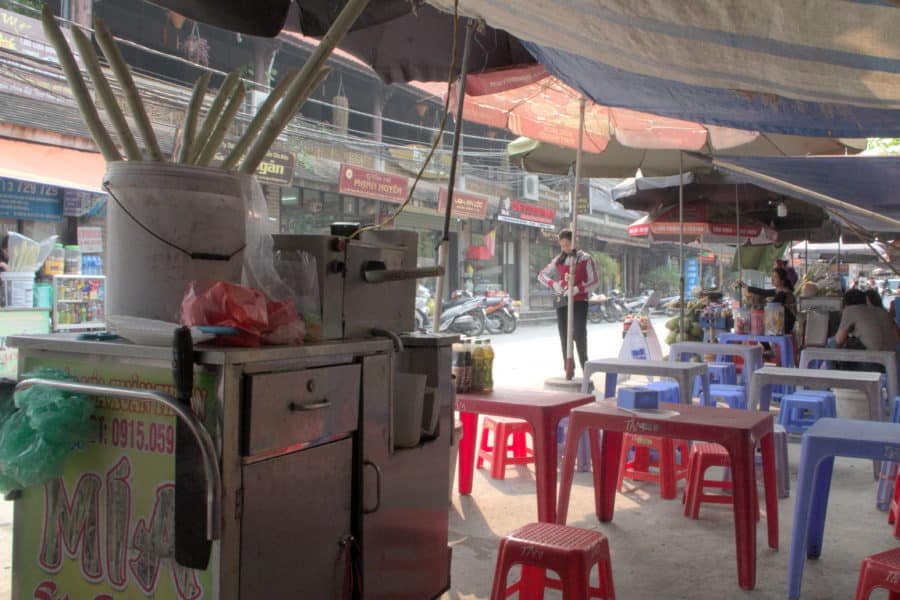Pressed sugar cane juice
For the weary traveller the sight of a nuoc mia stand is a godsend. It’s the ultimate healthy refreshment that revitalizes and invigorates the body with its delicious, sweet, yellow nectar. Roadside vendors sitting beside clumps of cane mulch, instantly press your drink upon order, it just doesn’t get any fresher than that. In the sweltering, summer months vendors serve nuoc mia with ice (mía đá) which provides tremendous relief and hydration.
The sugar cane stalks are manually peeled and cut into smaller pieces before being fed into a press several times extracting every precious drop of juice. In the final few runs through the press a kumquat is added which brings mild, not overpowering acidic balance to the drink.
In the past presses were operated manually but these days more hygienic electric stainless steel presses are operated. Buying such machines is a low capital investment and local entrepreneurs have popped up with nuoc mia stands all over Vietnam quenching the thirst of parched city street walkers and highway motorbike riders up and down the country.

Health Benefits
Nuoc mia is an incredibly salubrious beverage that contains minerals such as calcium, iron, magnesium, manganese and potassium in quantities beneficial to your health. It’s known to have anti-cancer effects due to its alkaline nature, helps prevent kidney stones, detoxifies the liver and because of the protein it contains it is used to treat people with fevers.
Skin care is important in Vietnamese culture and the fact that nuoc mia is extremely good for one’s skin is another reason the drink is so popular here. Consuming sugarcane juice moisturizes the skin together with preventing aging and acne. Drink nuoc mia and stay beautiful!

Sugar Can Farming In The North
You won’t find much sugarcane growing in downtown Hanoi although it is cultivated not too far away. It’s been grown in the outer Ba Vì district for forty years and has really taken to the hilly neighbouring provinces of Hòa Bình and Thanh Hóa.
Several varieties are farmed, imported from Java Indonesia in 1935, Taiwan in 1970 and as far as Cuba in 1974. Crops are generally harvested every 12-15 months although younger cane is collected earlier than this as it provides more juice.





